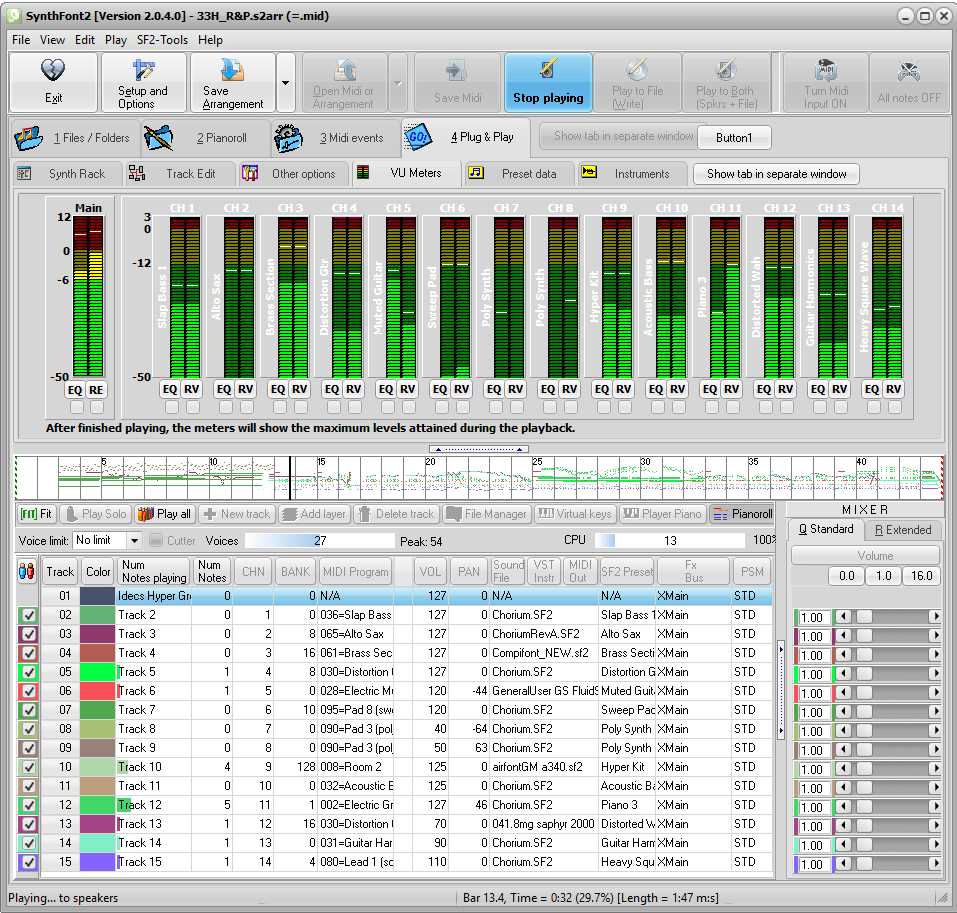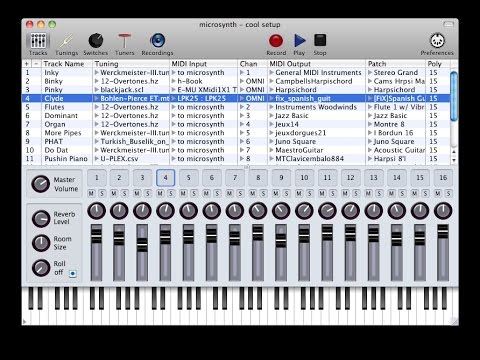
Some features such as VST plugins are currently usable in XM and IT as well but really should only be used in MPTM files. It is based on the IT format, with added capabilities of custom sample tunings, Parameter Control events, multiple Pattern Sequences, tempo swing, fractional tempos, global resampling settings and many more features. IT effect commands use a more advanced set of S3M commands.

Samples also have decent compression in file storage when saving IT files directly in Impulse Tracker or enabling OpenMPT's experimental IT compression settings. Like S3M files (and contrary to XM files), panning is channel-based, meaning that channels have an initial pan position which can be overridden by panning commands or instruments’ and samples’ default panning settings. Impulse Tracker introduced the IT format, which, in comparison to the XM format, allows instruments to also specify the transposition of assigned samples depending on the note being played, applying resonant filters to samples, and defining “New Note Actions” (NNAs) for instruments to release playing notes on a pattern channel while a new note is already playing, which helps to keep the number of pattern channels at a manageable amount while still being able to have a high polyphony.

You can define initial tempos and speeds provide envelopes to samples by assigning them to instruments set sample looping and apply automatic sample vibrato oscillation and with OpenMPT, apply VST plugins to instruments, channels, or the whole track to spice up your old XM compositions.
#Openmtp instruments soundfont mod
It uses MOD effect command letters, plus a few of its own for more sound control. XM uses instrument-based panning – instrument numbers in patterns always reset the channel’s panning to the current sample’s initial panning. It also added the ability to map several samples to the same instrument for multi-sampled instruments or drum sets. With the XM format, Fasttracker 2 introduced the concept of “instruments”, which applied volume and panning envelopes to samples. OpenMPT can fully emulate this chip in software. Compared to MOD, there is also a different, expanded set of effect commands.Ī unique feature of the S3M format is the ability to make use of samples and synthesized FM instruments (via the Yamaha OPL2 chip) at the same time. Other improvements include the ability to set the initial tempo and speed (ticks per row), initial global and sample volume as well as initial channel panning.

Scream Tracker 3′s S3M format added sample tuning (defining the exact frequency of the middle C for samples), increased the number of playback channels, made use of an extra column specifically for volume control (which was extended by other trackers to handle panning commands as well), and compressed pattern data for smaller file sizes. There is limited sample control and few global settings. Initial tempo, number of rows (always 64), and the “time signature” cannot be defined (always uses the highlight values provided in the Display setup). Instruments cannot be used in the MOD format, only 8-bit samples with a maximum size of 128 KB per sample and with a limited set of parameters. With OpenMPT, you can use up to 99 tracks (the default is 4, and not all applications support that many channels - few support more than 32). Later, variants of the MOD format that appeared on the Personal Computer extended the number of channels, added panning commands (the Amiga’s four hardware channels had a pre-defined stereo setup) and expanded the Amiga’s frequency limit, allowing for more octaves of notes to be supported.Īrguably one of the most widespread tracker formats (also due to its use in many computer games and demos), it is also one of the simplest to use, but also only provides few pattern commands to use. Ultimate SoundTracker was soon superseded by NoiseTracker and ProTracker, which allowed for more tracker commands (effects), longer samples, more patterns and other improvements.

It was designed to use 4 channels each with one voice. A very basic version of this format (with only very few pattern commands and short samples supported) was introduced by Karsten Obarski’s Ultimate SoundTracker. The MOD format was the first file format for tracked music on the Commodore Amiga. 2 File formats that can only be read by OpenMPTįile formats that can be read and written by OpenMPT The ProTracker MOD format (.mod).1 File formats that can be read and written by OpenMPT.


 0 kommentar(er)
0 kommentar(er)
